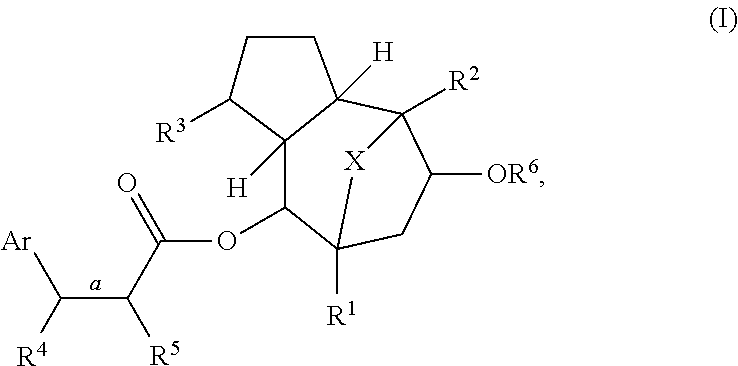Methods of treating patients infected with HIV and htlv
a technology for hiv and htlv, applied in the field of hiv and htlv treatment methods, can solve the problems of poor prognosis of htlv patients with acute subtypes of atl, impeded clinic development of htlv patients, and human and monetary costs of this disease compel the development of the disease,
- Summary
- Abstract
- Description
- Claims
- Application Information
AI Technical Summary
Benefits of technology
Problems solved by technology
Method used
Image
Examples
example 1
[0083]This example demonstrates the effect of englerin A on the transcriptional activity of NFκB and HSF1 in 293A cells.
[0084]293A cells were transiently transfected with PKCθ or a control plasmid for 24 h prior to transfection with reporter plasmids for either NFκB or HSF1 to measure their transcriptional activity. Simultaneously, cells were treated with 0.1 μM englerin A for 24 h. Transcriptional activity was quantified by luminescence, and the results set forth in Tables 1 and 2.
TABLE 1NFkB transcriptional activity (%)NFκB TranscriptionalActivity (%)No PKCθControl99.99865englerin A104.8113PKCθControl102.9152englerin A120.3657
TABLE 2HSF1 Transcriptional Activity (%)HSF1 TranscriptionalActivity (%)No PKCθControl99.99767englerin A99.12789PKCθControl103.6724englerin A130.278
[0085]As is apparent from the results set forth in Tables 1 and 2, 293A cells not transfected with PKCθ exhibited an approximately 5% increase in NFkB transcriptional activity when treated with englerin A as compa...
example 2
[0086]293A cells were transfected with PKCθ for 24 h. The cells were then treated with different concentrations of englerin A (0, 1, and 10 micromoles) for 24 h. 48 h post-transfection and 24 h after treatment with englerin A, Nef protein was immunoprecipitated with antibody for HA. PKCθ (GFP-tagged) association was detected by immunoblotting using antibody for GFP. The results are depicted in FIG. 1, which shows that englerin A causes a dose-dependent interaction of PKCθ with Nef.
example 3
[0087]Peripheral blood mononuclear cells (PBMCs) obtained from normal volunteers were activated with antibodies to CD3 and CD28, and were treated with englerin A (1 microM) for 24 h. Expression of Treg markers CD8+ and CD4+ was analyzed by flow cytometry. The results are set forth in Table 2.
TABLE 2CD4 + TregCD8 + TregPBMC11PBMC + englerin A0.690PBMC + CD3 + CD2818.5249PBMC + CD3 + englerin A5.4470
[0088]As is apparent from the results set forth in Table 2, englerin A significantly inhibits Treg activation and number.
PUM
| Property | Measurement | Unit |
|---|---|---|
| body weight | aaaaa | aaaaa |
| body weight | aaaaa | aaaaa |
| body weight | aaaaa | aaaaa |
Abstract
Description
Claims
Application Information
 Login to view more
Login to view more - R&D Engineer
- R&D Manager
- IP Professional
- Industry Leading Data Capabilities
- Powerful AI technology
- Patent DNA Extraction
Browse by: Latest US Patents, China's latest patents, Technical Efficacy Thesaurus, Application Domain, Technology Topic.
© 2024 PatSnap. All rights reserved.Legal|Privacy policy|Modern Slavery Act Transparency Statement|Sitemap



